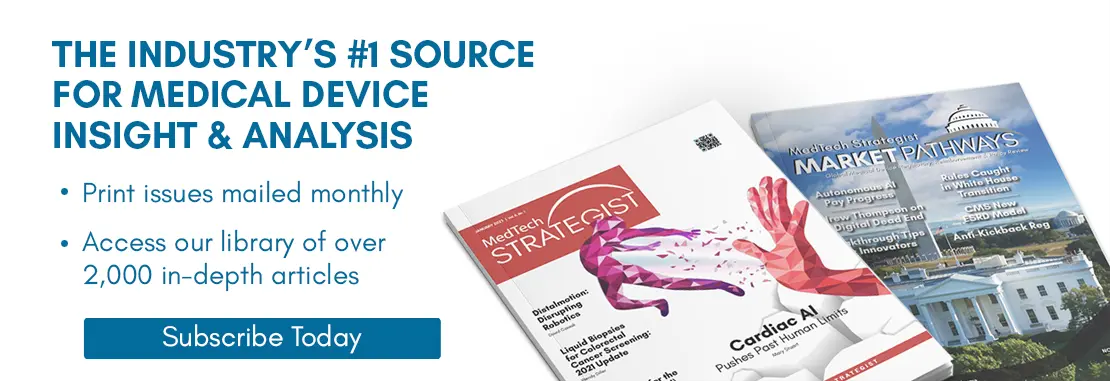ARTICLE SUMMARY:
Telemedicine is uniquely positioned to help relieve some of the pressures healthcare providers face during the COVID-19 pandemic. Remote screening of symptomatic patients is just one of the benefits it offers.
The recent moves by CMS, HHS, and Congress to increase access to telemedicine are intended to make telehealth more widely available during the COVID-19 crisis in order to help keep people, particularly the vulnerable elderly population, from unnecessarily visiting healthcare facilities and help contain the spread of the virus. And they have been widely praised by a variety of stakeholders.
Telemedicine is not a panacea, but it is uniquely positioned to help relieve some of the pressures healthcare providers face during a pandemic such as COVID-19. Telehealth can remotely screen people who have symptoms of COVID-19 infection and help identify those at highest risk who need to be tested and/or those with severe symptoms who may need immediate hospitalization. Using technologies such as digital monitoring devices and machine-learning algorithms, clinicians can even remotely assess respiratory function and listen for fluid in the lungs during a telehealth visit. And they can do so without putting healthy patients or themselves at risk and without the need for protective masks and other personal protective equipment (PPE), which are already in short supply.
But the benefits of telemedicine extend well beyond first-line screening. Telemedicine also helps bolster the clinician workforce by making it possible to keep some physicians and nurses working who are quarantined due to virus exposure, and by enabling those who are older and at higher risk of infection (such as retired clinicians being reactivated to help in the pandemic) re-enter the workforce remotely. Moreover, telehealth provides remote access to a variety of specialist physicians who may be in short supply and can help smaller hospitals with fewer resources deal with other complex emergent cases such as stroke. (In fact, prior to the pandemic, telestroke consultations were already becoming common in rural and underserved areas of the US.)
Remote two-way communications equipment can even be employed inside the hospital and the ICU to help monitor patients when clinician resources and/or protective equipment are scarce. And mobile home health telemedicine units can be used to monitor sicker COVID-19 patients at home prior to hospital transfer to reduce hospital bed demand and facilitate the transfer process. Outside the hospital, a variety of remote monitoring tools can be used for at-home monitoring of patients with chronic conditions who would otherwise require in-person visits, thus keeping this high-risk group safe from virus exposure while reducing the patient-load burden on providers in hard-hit areas.
Telehealth also may be the ideal platform with which to collect essential data on the nature and growth of the pandemic. According to Jonathan Wiesen, MD, a pulmonary specialist at Ben-Gurion University’s Soroka Medical Center in Israel and chief medical officer of MediOrbis, a global telemedicine company, “telemedicine is perfectly positioned to serve as the first line of defense in this pandemic.” Not only can it be used to screen patients and educate them on how to prevent exposure, he says, it also may prove useful as a tool to gather health information regarding the spread of the infection, identifying new areas of infection and serving as a helpful means of containment.
“What better clinical service to coordinate and quarantine a disease,” Wiesen asks, “than a national centralized physician network whose expertise is remote communications and cloud-based software reporting?” (Telemedicine companies, along with remote chronic care providers such as Livongo Health Inc., can also benefit from HHS’ new interoperability rules, which standardize bulk data transfer. As our sister publication MTS Market Pathways reported on March 11, the new rules are “intended to improve interoperability with patient data in electronic health records and mobile apps are expected to accelerate development of software products that leverage patient data.”)
The telemedicine industry has long believed this technology is “underutilized and underappreciated,” Wiesen adds, but that is changing. “Nearly all employee groups and major insurers now offer it, and experts estimate that up to 80% of outpatient medicine could be adequately accomplished via telemedicine.” The current crisis only strengthens this conviction, he says. “The lasting impact will certainly be to strengthen telemedicine in the clinical community.”
Others have expressed similar sentiments. A recent editorial published in the New England Journal of Medicine states that telemedicine “may be a virtually perfect solution” for health systems during the COVID-19 crisis. It is “a 21st-century approach to forward triage,” according to the authors, who note that respiratory symptoms, such as those associated with COVID-19, are among the most common uses of telemedicine. Moreover, automated screening algorithms—"automated logic flows (bots) that refer moderate-to-high-risk patients to nurse triage lines”—could be built into the screening process, they write, and they can include local epidemiologic trends to enable a more accurate indication of viral infection risk. (Of note, one health “bot” company—Orbita Inc.—recently launched a COVID-19 screening chatbot that it is providing free of charge to healthcare systems during the pandemic.) More than 50 US health systems already have telemedicine programs in place, according to the authors, and many are working to further expand their remote care capabilities to help address the pandemic.
![]() Trial MyStrategist.com and unlock 7-days of exclusive subscriber-only access to the medical device industry's most trusted strategic publications: MedTech Strategist & Market Pathways. For more information on our demographics and current readership click here.
Trial MyStrategist.com and unlock 7-days of exclusive subscriber-only access to the medical device industry's most trusted strategic publications: MedTech Strategist & Market Pathways. For more information on our demographics and current readership click here.
*End of Article*

